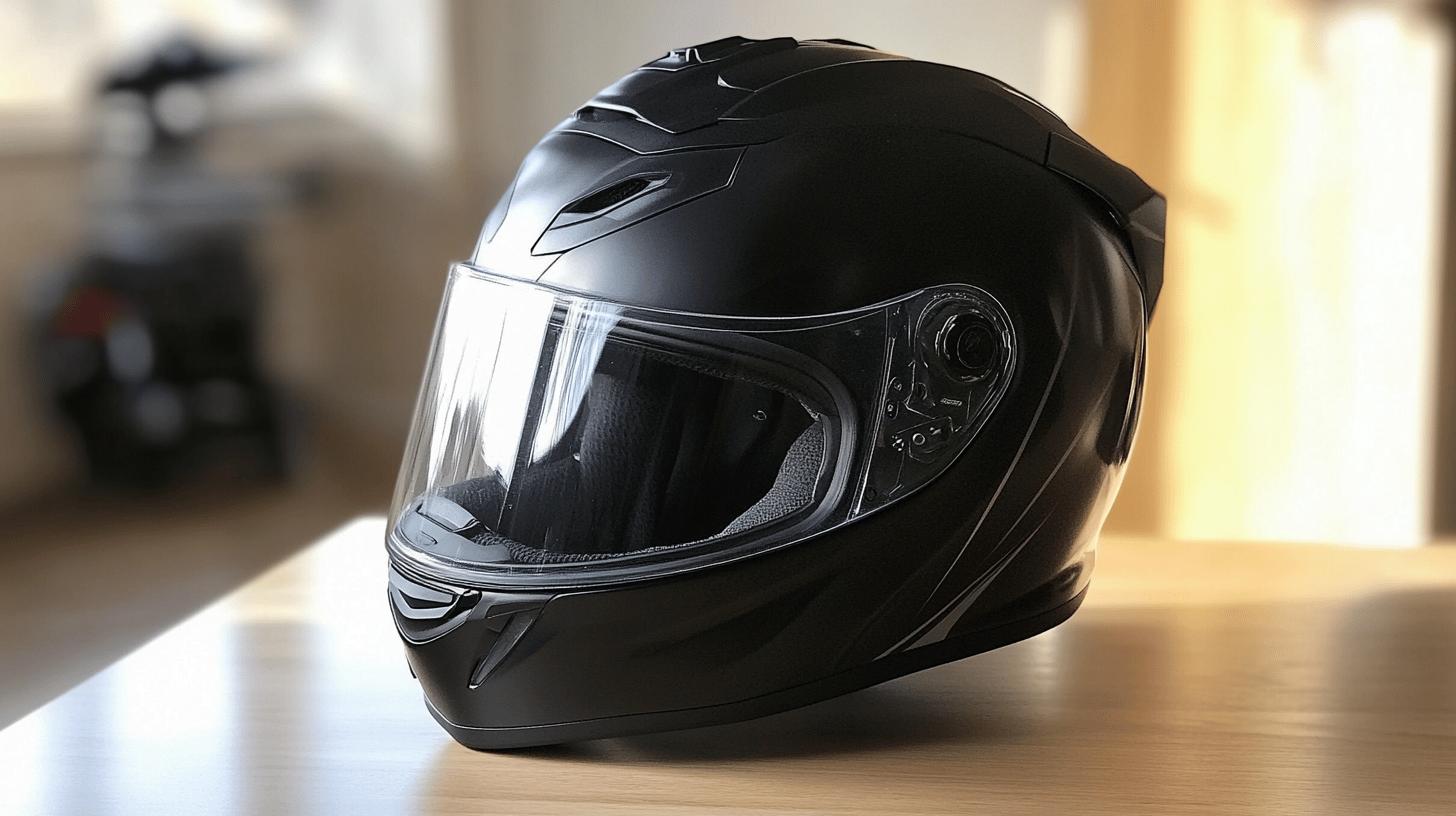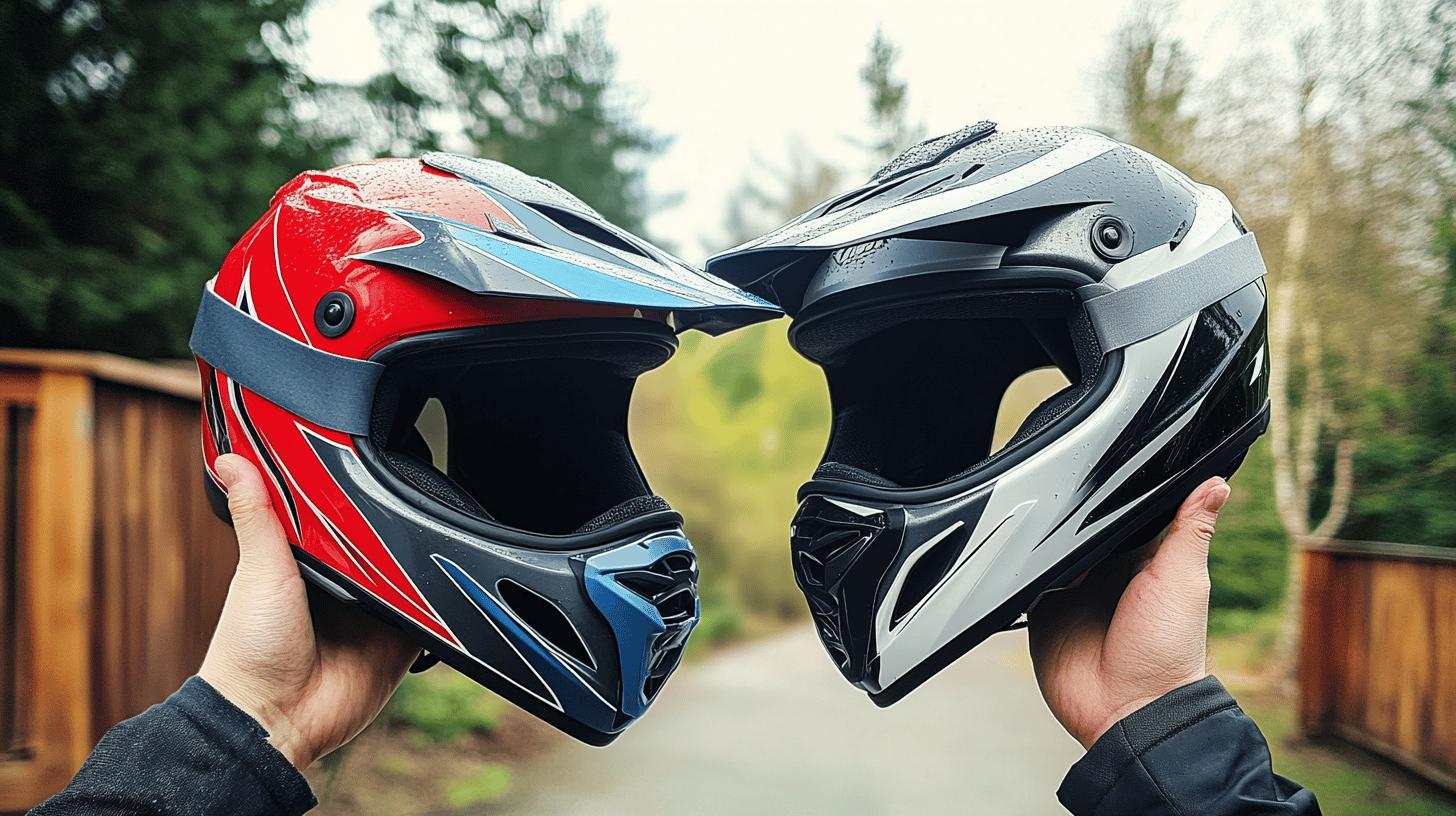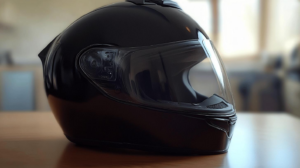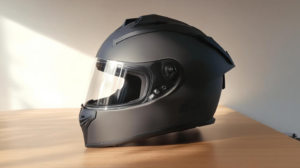Ever looked at a low profile motorcycle helmet and wondered why it gives off that 'mushroom head' vibe despite being marketed as sleek? This notorious look isn't just about style; it's deeply tied to stringent safety standards.
To protect riders, helmets require precise padding and thickness, which often leads to the dreaded bulkiness. But is this compromise between safety and aesthetics unavoidable?
Dive into the world of helmet design where safety regulations, material choices, and style preferences collide, revealing why safety sometimes trumps style in the quest for the perfect helmet.
Understanding the "Mushroom Head" Phenomenon in Low Profile Helmets

Why do low profile motorcycle helmets have mushroom heads? The "mushroom head" look is a common critique of low profile helmets. This appearance results from the helmet's necessary thickness, as mandated by safety standards like DOT FMVSS 218, to ensure adequate impact protection.
Low profile helmets must strike a balance between aesthetics and safety. The outer shell's design and the internal padding contribute to the helmet's bulkiness, which is essential for absorbing shock during an impact.
This padding, typically made from multi-density EPS (Expanded Polystyrene), is crucial for rider safety but inevitably adds to the helmet's girth. Manufacturers face the challenge of maintaining a sleek look while adhering to these strict safety guidelines.
Another factor influencing helmet bulkiness perception is the need for comprehensive head coverage. Safety standards dictate a certain level of shell thickness and coverage area to protect against various impact angles.
Although modern materials like carbon fiber and polycarbonate help reduce weight, they cannot completely eliminate the need for substantial padding. As a result, low profile helmets often appear bulkier than their non-compliant counterparts. This trade-off is a testament to the complex interplay between safety and design.
Factors contributing to the "mushroom head" appearance include:
-
Safety padding requirements: Essential for impact absorption.
-
Shell thickness: Necessary to meet safety standards.
-
Coverage area: Must protect a wide range of impact angles.
-
Material limitations: Lightweight materials still require bulk for protection.
-
Design constraints: Balancing aesthetics with safety compliance.
Understanding these factors helps explain why low profile helmets have their characteristic "mushroom head" look.
Helmet Design and Legal Requirements

Motorcycle helmets are designed not only for style but primarily for safety, which is dictated by rigorous legal requirements. These safety standards ensure that helmets provide adequate protection during impacts, influencing their design and often contributing to a bulkier appearance.
DOT Standards
The Federal Motor Vehicle Safety Standard No. 218, known as DOT FMVSS 218, sets the benchmark for helmet safety in the United States. Helmets must meet specific criteria for impact attenuation, penetration resistance, and retention system effectiveness.
This standard requires a certain level of shell thickness and energy-absorbing padding, which contributes to the "mushroom head" look. The design must include sufficient surface area coverage, ensuring the helmet can withstand various impact scenarios.
ECE Standards
The Economic Commission for Europe (ECE) regulation, specifically ECE 22.05, is another pivotal standard, recognized in over 50 countries. ECE standards focus on similar safety aspects as DOT, including impact absorption and retention, but also incorporate tests for chin strap strength and visor durability. ECE standards often require comprehensive testing, resulting in helmets that might appear bulkier due to the extensive protective features needed to pass these tests.
Snell Standards
The Snell Memorial Foundation offers an independent certification known for its stringent testing procedures. Snell standards go beyond DOT and ECE requirements, including more rigorous impact tests and additional checks like roll-off resistance. Helmets certified by Snell are typically designed with enhanced safety features, adding to their bulk to ensure superior protection.
| Standard | Key Specifications |
|---|---|
| DOT FMVSS 218 | Impact attenuation, penetration resistance, retention system effectiveness |
| ECE 22.05 | Impact absorption, chin strap strength, visor durability |
| Snell | Advanced impact tests, roll-off resistance, enhanced protection features |
| All Standards | Comprehensive coverage, increased shell thickness, and padding requirements |
Safety standards are indispensable in helmet design, ensuring rider protection while influencing the helmet's bulk and overall appearance.
Materials and Construction Techniques

Why do low profile helmets look bulky? The appearance of bulkiness in low profile helmets can be attributed to the materials and construction techniques employed to meet safety standards. These helmets are crafted using materials like fiberglass, polycarbonate, and carbon fiber, which provide robust protection while keeping the helmet's weight manageable.
Fiberglass is known for its durability and impact resistance, making it a common choice for helmet shells. Polycarbonate offers excellent impact resistance and flexibility, allowing for a thinner construction that still meets safety requirements. Carbon fiber, while more expensive, is favored for its strength-to-weight ratio, allowing manufacturers to design helmets that are both lightweight and strong.
The construction of low profile helmets focuses on balancing safety and aesthetics. Multi-density EPS (Expanded Polystyrene) liners are integral to this balance, providing the necessary impact absorption without excessive bulk. These liners are designed to compress upon impact, dissipating energy and protecting the rider's head. The challenge lies in optimizing liner thickness to ensure safety while maintaining a sleek profile.
Construction techniques that help minimize helmet profile include:
-
Layered shell construction: Uses multiple layers to enhance strength without adding bulk.
-
Variable liner density: Adjusts EPS density in critical areas to reduce size.
-
Integrated visor design: Incorporates visors seamlessly into the helmet shell.
- Advanced molding techniques: Allows precise shaping for a closer fit to the head.
These techniques are critical in creating low profile helmets that prioritize safety without compromising on style, addressing the visual bulkiness often associated with necessary safety features.
Consumer Perceptions and Style Preferences

Helmet style preferences significantly impact purchasing decisions among motorcycle riders. Consumers often prioritize aesthetics, seeking helmets that not only ensure safety but also align with their personal style.
The "mushroom head" appearance is a major concern for many, prompting a demand for designs that minimize this effect. Riders view helmets as fashion statements, integrating them into their overall look and the style of their motorcycles.
Trends in helmet design reflect diverse consumer preferences, with vintage and minimalist styles gaining popularity. Vintage helmets often evoke a sense of nostalgia, appealing to those who favor classic aesthetics reminiscent of earlier motorcycle eras.
Minimalist designs cater to riders who prefer sleek, no-frills appearances, focusing on clean lines and subtle profiles. These styles not only reduce the perceived bulkiness but also blend with a wide range of motorcycle types, from cruisers to sport bikes.
Manufacturers have responded to these style demands by innovating helmet design and construction. By employing advanced materials and techniques, they aim to reduce the visual bulk without compromising safety.
This includes utilizing lightweight materials like carbon fiber and integrating design elements that streamline the helmet's profile. The result is a variety of helmets that cater to aesthetic preferences while maintaining the rigorous safety standards essential for rider protection.
The Trade-Off Between Safety and Aesthetics

Why do low profile helmets look bulky? The primary reason is the intricate trade-off between ensuring rider safety and maintaining aesthetic appeal. Helmets must comply with safety standards that enforce specific requirements for shell thickness and padding.
These requirements are crucial for absorbing impact forces and protecting the rider's head in the event of a crash. This necessary padding and thickness often lead to a "mushroom head" appearance, creating a design challenge for manufacturers aiming to make stylish helmets without compromising safety.
To address these challenges, manufacturers are continually innovating in helmet design. Advances in materials and technologies have allowed for thinner yet strong helmet shells. For instance, multi-density EPS liners are used to provide necessary shock absorption while reducing bulk.
Another innovation is the use of lightweight materials like carbon fiber, which offers high strength-to-weight ratios, enabling a slimmer profile without sacrificing protection. Integrated visors and advanced molding techniques have also contributed to reducing helmet size while maintaining safety standards.
Looking toward the future, helmet design is expected to further evolve with continued advancements in materials science and engineering. The focus will likely be on developing materials that offer even greater strength and flexibility, allowing for thinner constructions.
Additionally, digital technologies such as 3D printing could enable more customized and precise helmet designs, enhancing both fit and aesthetics. These innovations will aim to bridge the gap between safety and style, ultimately providing riders with helmets that offer protection without compromising their desired look.
-
Multi-density EPS liners: Enhance shock absorption with reduced bulk.
-
Lightweight materials: Use of carbon fiber for strong, slim profiles.
-
Advanced molding techniques: Enable precise shaping for closer fits.
Comparing Helmet Styles and Their Impact on Safety

Motorcycle helmets come in various styles, each offering distinct benefits and drawbacks. The choice between low profile helmets and full face helmets often boils down to a trade-off between style, comfort, and protection. Understanding these differences is crucial for riders looking to balance their aesthetic preferences with safety needs.
Low Profile Helmets
Low profile helmets are popular for their sleek and minimalist appearance, appealing to riders who prioritize aesthetics and comfort. These helmets are lighter and often provide a more open feeling, enhancing the riding experience for those who prefer less coverage.
However, the primary drawback lies in their limited protection. Low profile helmets typically expose more of the face and neck, making them less effective in shielding these areas during an accident. They meet safety standards like DOT, but their coverage is not as comprehensive as full face helmets.
Full Face Helmets
Full face helmets offer the most extensive coverage, enveloping the entire head and face. This design provides superior protection against impacts and environmental elements, making them a preferred choice for safety-conscious riders. The inclusion of a chin bar and visor enhances their protective capabilities, reducing injury risks significantly.
However, full face helmets can be heavier and less ventilated, potentially leading to discomfort over long rides. Despite these drawbacks, their protective benefits are unmatched, and they often receive higher safety ratings compared to low profile designs.
| Helmet Type | Features | Safety Rating |
|---|---|---|
| Low Profile | Sleek design, lightweight, less face coverage | Moderate |
| Full Face | Comprehensive coverage, includes chin bar, superior protection | High |
| Half Helmets | Minimal coverage, lightweight, open face | Low |
| Modular Helmets | Flip-up chin bar, versatile, variable protection | Variable |
Choosing the right helmet involves weighing these factors against personal preferences and riding habits, ensuring both safety and satisfaction on the road.
Final Words
Understanding why low profile motorcycle helmets have mushroom heads clarifies the balance between aesthetics and mandatory safety standards. Helmets achieve necessary protection through specific padding and materials.
Despite the distinct "mushroom head" appearance, these helmets ensure rider safety while manufacturers aim to meet style demands. Designers continuously innovate, seeking slimmer profiles without sacrificing safety.
Embracing this design phenomenon results in safer riding without compromising personal style preferences, offering a secure and stylish ride for enthusiasts.
FAQ
What is a mushroom head helmet?
A mushroom head helmet is a term used to describe low profile motorcycle helmets that appear oversized due to the thick padding required to meet safety standards.
Why do low profile motorcycle helmets have mushroom heads?
Low profile helmets have mushroom heads because the necessary thickness of padding and shell materials is essential to ensure impact protection and comfort, making them appear bulkier.
Why do motorcycle cops not wear full face helmets?
Motorcycle cops often wear open-face helmets as they facilitate communication, allowing for better interaction with the public and radio use during patrol duties.
Why do motorcycle helmets have peaks?
Peaks on motorcycle helmets help shield riders' eyes from sun glare and protect their faces from debris and rain while providing ventilation.
Why do bikers put their helmets on the ground?
Bikers place helmets on the ground to signal distress or to prevent them from falling off a motorcycle seat, reducing damage risk.
What are the best low profile motorcycle helmets available?
The best low profile helmets are those that balance safety and aesthetics, meeting DOT or ECE standards while offering a sleek design and comfort.
Are there low profile motorcycle helmets designed specifically for women?
Yes, manufacturers offer women's low profile motorcycle helmets, catering to fit and style preferences with appropriate safety certifications.
What are the benefits of half helmet motorcycle DOT models?
Half helmet DOT models provide minimal coverage with improved ventilation and less weight, suitable for short rides and hot weather, while meeting basic safety standards.
What makes a beanie helmet different from other motorcycle helmets?
Beanie helmets are ultra-low profile and lightweight, typically providing minimal coverage to prioritize style and comfort over protection, often not meeting safety certifications.

Mark Anderson is a trusted expert with over 25 years of riding experience. At 56, his deep knowledge of long-distance touring and participation in major motorcycle rallies makes him a reliable source for gear recommendations on ProtectiveGearz. Mark’s decades of firsthand experience ensure his advice is authoritative and valuable to riders seeking expert guidance.



